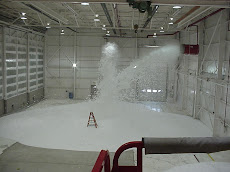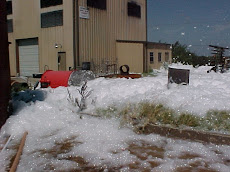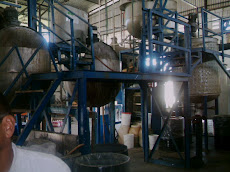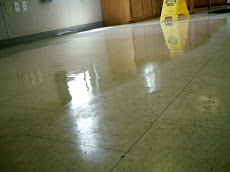La combinacion de diferentes materias primas o ingredientes de diferentes propiedades fisico-quimicas, para formar un producto con propiedades especificas definidas, se denomina la formulacion. La formulacion es el balance meticuloso de todos los ingredientes en una simple entidad fisica, que puede ser por ejemplo un liquido o solido. Usualmente debe existir una "quimica" entre los componentes para poderse obtener las deseadas caracteristicas del producto final; algunos componentes aportan las caracteristicas estructurales, como dureza, estado fisico, viscosidad, etc y otras las caracteristicas funcionalers, como color, lubricidad, solvencia, etc.
En muchos casos las caracteristicas de los componentes cambian su forma y fisico-quimica original, para dar paso a una nueva combinada: por ejemplo cuando se mezcla agua que es un liquido de baja viscosidad, con resina Xantan que es un polvo ligero, se obtiene una solucion de alta viscosidad que es muy homogenea y estable.
En fin, para establecer la correcta formulacion de cualquier producto, primero identifique las caracteristicas y propiedades deseadas para el producto, y luego seleccione las materias primas de acuerdo a sus caracteristicas fisico-quimicas que le puedan proporcionar las deseadas caracteristicas estructurales y funcionales, luego analice si hay "quimica entre ellas, para proceder luego a formularlas.
lunes, 26 de mayo de 2008
FISICO QUIMICA DE LAS FORMULACIONES QUIMICAS
Suscribirse a:
Enviar comentarios (Atom)
Vistas de página en total
GREEN CHEMICALS
The Green Seal certification is granted by the organization with that name and has a great number of members contributing with the requirements to pass a raw material or a chemical product as "green". Generally for a material to be green, has to comply with a series of characteristics like: near neutral pH, low volatility, non combustible, non toxic to aquatic life, be biodegradable as measured by oxygen demand in accordance with the OECD definition.
Also the materials have to meet with toxicity and health requirements regarding inhalation, dermal and eye contact. There is also a specific list of materials that are prohibited or restricted from formulations, like ozone-depleting compounds and alkylphenol ethoxylates amongst others. Please go to http://www.greenseal.com/ for complete information on their requirements.
For information on current issues regarding green chemicals, see the blog from the Journalist Doris De Guzman, in the ICIS at: http://www.icis.com/blogs/green-chemicals/.
Certification is an important — and confusing — aspect of green cleaning. Third-party certification is available for products that meet standards set by Green Seal, EcoLogo, Energy Star, the Carpet & Rug Institute and others.
Manufacturers can also hire independent labs to determine whether a product is environmentally preferable and then place the manufacturer’s own eco-logo on the product; this is called self-certification. Finally, some manufacturers label a product with words like “sustainable,” “green,” or “earth friendly” without any third-party verification.
“The fact that there is not a single authoritative standard to go by adds to the confusion,” says Steven L. Mack M.Ed., director of buildings and grounds service for Ohio University, Athens, Ohio.
In www.happi.com of June 2008 edition, there is a report of Natural formulating markets that also emphasises the fact that registration of "green formulas" is very confused at present, due to lack of direction and unification of criteria and that some governmental instittion (in my opinion the EPA) should take part in this very important issue.
Also the materials have to meet with toxicity and health requirements regarding inhalation, dermal and eye contact. There is also a specific list of materials that are prohibited or restricted from formulations, like ozone-depleting compounds and alkylphenol ethoxylates amongst others. Please go to http://www.greenseal.com/ for complete information on their requirements.
For information on current issues regarding green chemicals, see the blog from the Journalist Doris De Guzman, in the ICIS at: http://www.icis.com/blogs/green-chemicals/.
Certification is an important — and confusing — aspect of green cleaning. Third-party certification is available for products that meet standards set by Green Seal, EcoLogo, Energy Star, the Carpet & Rug Institute and others.
Manufacturers can also hire independent labs to determine whether a product is environmentally preferable and then place the manufacturer’s own eco-logo on the product; this is called self-certification. Finally, some manufacturers label a product with words like “sustainable,” “green,” or “earth friendly” without any third-party verification.
“The fact that there is not a single authoritative standard to go by adds to the confusion,” says Steven L. Mack M.Ed., director of buildings and grounds service for Ohio University, Athens, Ohio.
In www.happi.com of June 2008 edition, there is a report of Natural formulating markets that also emphasises the fact that registration of "green formulas" is very confused at present, due to lack of direction and unification of criteria and that some governmental instittion (in my opinion the EPA) should take part in this very important issue.

















































No hay comentarios:
Publicar un comentario